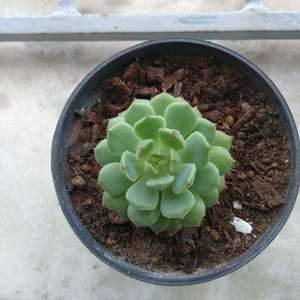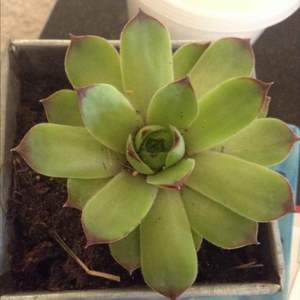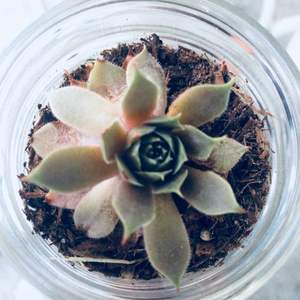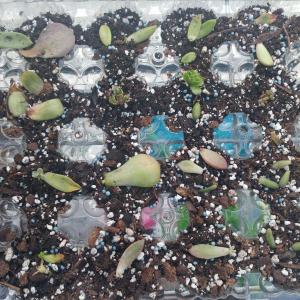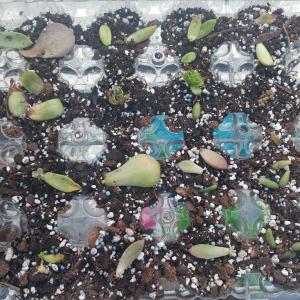求助
Catarina ZS
2018年06月07日

Does somebody know the identification of these succulent?
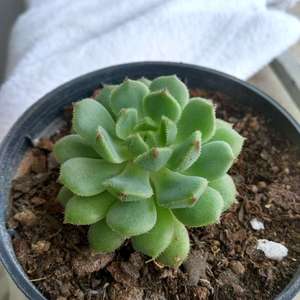
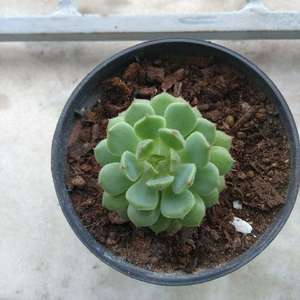


0
0
Catarina ZS:Thank you. Now I think it as an Echeveria Dondo :-)
CiaraCrearions:Not super helpful but it does look like some kind of Echeveria!
求助
Katy Appleton
2018年06月05日

Someone help me identify this succulent!
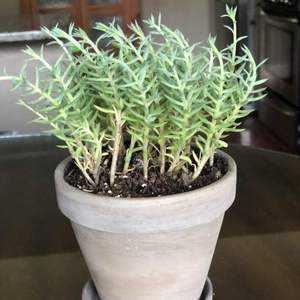
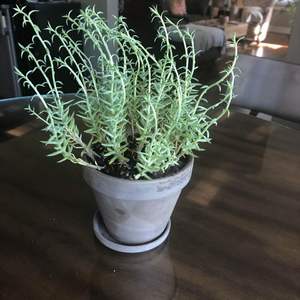


0
0
Fion:佛甲草(Sedum lineare Thunb)
求助
meriunkat
2018年05月30日

Anyone know what type of succulent this might be? have in mind that the original Perle Von Nurnberg has thinner and greener leaves.
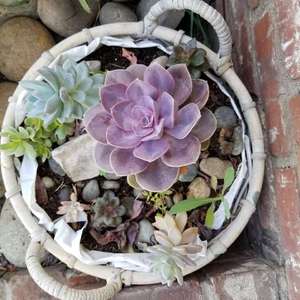

1
0
suculea:Echeveria 'Magic red' maybe?
meriunkat:@CiaraCrearions yes I agree
CiaraCrearions:I wish I knew it’s beautiful! But definitely some kind of Echeveria!
Fion:紫珍珠(Echeveria ‘Perle von Nürnberg’)
求助
Whitneykrieger
2018年05月23日

What kind of succulent is this?


0
0
Fion:筒叶花月(Crassula Obliqua‘ Gollum)
meriunkat:it looks like Jade plant Crassula Ovata Gollum Ogre Ears
文章
Miss Chen
2018年05月23日

Description: This herbaceous perennial plant is up to 8" tall and unbranched, except at the base. Both fertile and infertile shoots occur; they form low mats of vegetation across the ground, although fertile shoots with flowers are taller. The succulent stems are terete, light green or pink, and glabrous or finely short-pubescent. The lower leaves of fertile shoots and all leaves of infertile shoots are up to ¾" long and ½" across. These leaves are light green, obovate to nearly orbicular in shape, smooth along their margins, and glabrous; they are whorled in groups of 3 along the stems. The upper leaves of fertile shoots are up to ½" long and ¼" across. These latter leaves are light green, rhombic-elliptic in shape, smooth along their margins, and glabrous; they are either alternate or whorled in groups of 3 along the stems. Both types of leaves are fleshy. The stems of fertile shoots terminate in cymes of flowers. Each flat-topped cyme has about 3 (less often 4) widely spreading branches of flowers; these branches are white to light green, terete, and finely short-pubescent. There are usually 10-25 flowers per cyme; these flowers are sessile, or nearly so.
At the base of each flower, there is a leafy bract that resembles the upper leaves of fertile shoots, except it is smaller in size. Each flower is about ½" across or a little more, consisting of 4 narrow white petals, 4 light green sepals, 8 stamens, and 4 erect to ascending white pistils (or carpels) in the center. The anthers of the stamens have a silvery appearance while they are immature, but they later become red or purple. The blooming period occurs from late spring to early summer, lasting about 1 month for a colony of plants. The flowers are slightly fragrant. Afterwards, each flower is replaced by 4 divergent follicles containing the seeds. These follicles are narrowly lanceoloid in shape and 4-5 mm. (a little less than ¼") in length. About 6-12 tiny seeds (individually about 1.0 mm. long & 0.5 mm. across) are contained in each follicle. At maturity, each follicle splits open along one side, releasing the seeds; they are small enough to be carried aloft by the wind. The root system is fibrous. When the sprawling stems establish contact with moist ground, they can form the rootlets of clonal plants at their nodes. Thus, reproduction is by seed or clonal offsets.

Cultivation: The preference is partial sun to light shade, moist to dry-mesic conditions, and a loamy or rocky soil with decaying leaf mould. The foliage is little-bothered by insects and disease. There should be some protection from prevailing winds and hot afternoon sun. This plant is somewhat resistant to drought because of its fleshy leaves and stems, which store water; this drought resistance is enhanced by its Crassula Acid Metabolism (CAM).
Range & Habitat: The native Wild Stonecrop occurs occasionally in widely scattered sites in southern, central, and NE Illinois; it is absent from the NW area of the state (see Distribution Map). Habitats include wooded ravines, partially shaded banks along rivers and streams, lightly shaded cliffs, and rocky wooded slopes. This plant is usually found on slopes where there is little ground vegetation. It is normally found in or near woodlands.

Faunal Associations: The flower nectar and pollen of stonecrops (Sedum spp.) attract various kinds of bees, including Andrena forbesii (Krombein et al., 1979). Less often, wasps and flies visit flowers of these plants. Insects that feed on the foliage of Wild Stonecrop (Sedum ternatum) include the Sedum Aphid (Aphis sedi) and the aphid Aphis acrita. The Eastern Chipmunk eats the roots of this plant (Wrazen & Svendsen, 1978).
Photographic Location: A partially shaded riverbank in Vermilion County, Illinois, and a rocky wooded slope at the Portland Arch Nature Preserve in west-central Indiana.

Comments: Both the flowers and the foliage are quite attractive; this native species should be grown in flower gardens more often. Wild Stonecrop is the only Sedum sp. that is native to central and northern Illinois; other Sedum spp. that have naturalized in this portion of the state have been introduced from abroad for horticultural purposes. In southern Illinois, there are 2 additional native Sedum spp. that are uncommon. Wild Stonecrop is fairly easy to distinguish from other Sedum spp., whether native or introduced, because it has nearly orbicular leaves in whorls of 3 and flowers with 4 white petals. Other Sedum spp. usually have more narrow leaves that are opposite or alternate, and their flowers often have 5 petals that are white, yellow, or pink. Another common name for Sedum ternatum is Three-leaved Stonecrop.
At the base of each flower, there is a leafy bract that resembles the upper leaves of fertile shoots, except it is smaller in size. Each flower is about ½" across or a little more, consisting of 4 narrow white petals, 4 light green sepals, 8 stamens, and 4 erect to ascending white pistils (or carpels) in the center. The anthers of the stamens have a silvery appearance while they are immature, but they later become red or purple. The blooming period occurs from late spring to early summer, lasting about 1 month for a colony of plants. The flowers are slightly fragrant. Afterwards, each flower is replaced by 4 divergent follicles containing the seeds. These follicles are narrowly lanceoloid in shape and 4-5 mm. (a little less than ¼") in length. About 6-12 tiny seeds (individually about 1.0 mm. long & 0.5 mm. across) are contained in each follicle. At maturity, each follicle splits open along one side, releasing the seeds; they are small enough to be carried aloft by the wind. The root system is fibrous. When the sprawling stems establish contact with moist ground, they can form the rootlets of clonal plants at their nodes. Thus, reproduction is by seed or clonal offsets.

Cultivation: The preference is partial sun to light shade, moist to dry-mesic conditions, and a loamy or rocky soil with decaying leaf mould. The foliage is little-bothered by insects and disease. There should be some protection from prevailing winds and hot afternoon sun. This plant is somewhat resistant to drought because of its fleshy leaves and stems, which store water; this drought resistance is enhanced by its Crassula Acid Metabolism (CAM).
Range & Habitat: The native Wild Stonecrop occurs occasionally in widely scattered sites in southern, central, and NE Illinois; it is absent from the NW area of the state (see Distribution Map). Habitats include wooded ravines, partially shaded banks along rivers and streams, lightly shaded cliffs, and rocky wooded slopes. This plant is usually found on slopes where there is little ground vegetation. It is normally found in or near woodlands.

Faunal Associations: The flower nectar and pollen of stonecrops (Sedum spp.) attract various kinds of bees, including Andrena forbesii (Krombein et al., 1979). Less often, wasps and flies visit flowers of these plants. Insects that feed on the foliage of Wild Stonecrop (Sedum ternatum) include the Sedum Aphid (Aphis sedi) and the aphid Aphis acrita. The Eastern Chipmunk eats the roots of this plant (Wrazen & Svendsen, 1978).
Photographic Location: A partially shaded riverbank in Vermilion County, Illinois, and a rocky wooded slope at the Portland Arch Nature Preserve in west-central Indiana.

Comments: Both the flowers and the foliage are quite attractive; this native species should be grown in flower gardens more often. Wild Stonecrop is the only Sedum sp. that is native to central and northern Illinois; other Sedum spp. that have naturalized in this portion of the state have been introduced from abroad for horticultural purposes. In southern Illinois, there are 2 additional native Sedum spp. that are uncommon. Wild Stonecrop is fairly easy to distinguish from other Sedum spp., whether native or introduced, because it has nearly orbicular leaves in whorls of 3 and flowers with 4 white petals. Other Sedum spp. usually have more narrow leaves that are opposite or alternate, and their flowers often have 5 petals that are white, yellow, or pink. Another common name for Sedum ternatum is Three-leaved Stonecrop.
1
0


